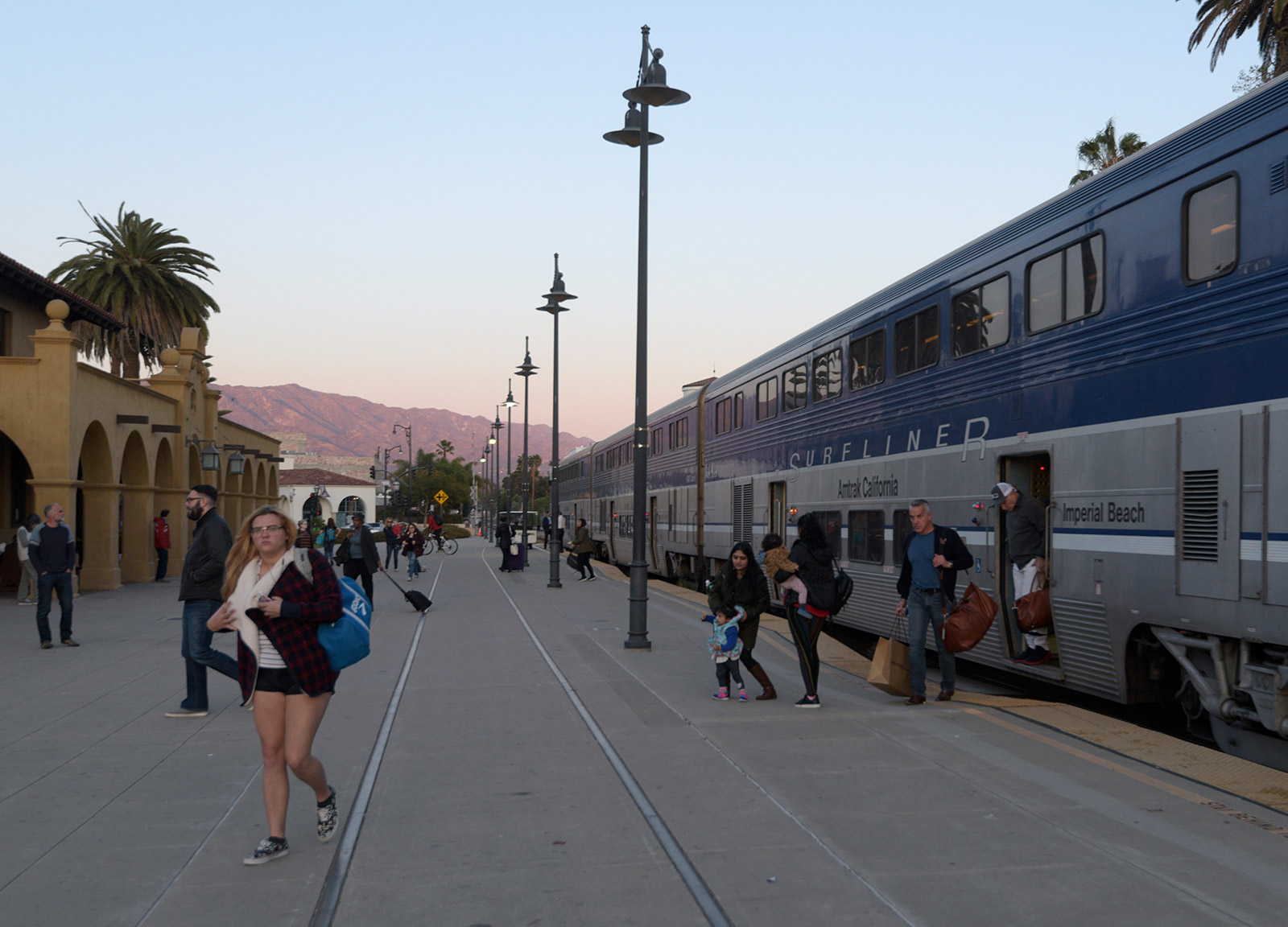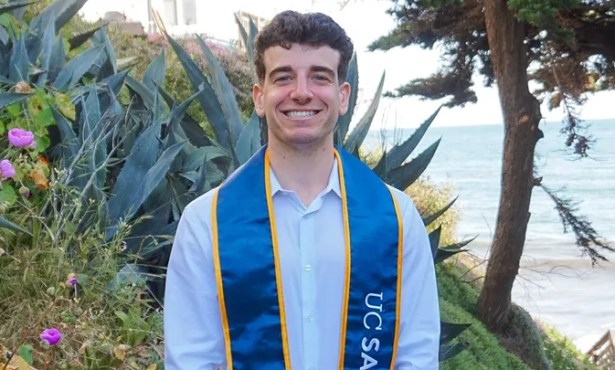A Train for Morning Commuters to Arrive at Long Last
Years of Struggle, Votes, and Meetings Culminate on April 2

No more ifs, ands, or buts. Santa Barbara commuters will be able to take the train starting the morning of April 2. Goleta Councilmember Michael Bennett delivered the good news after a unanimous vote by the rail authority: “It passed. Peak period service will begin April 2,” he said.
Santa Barbara Mayor Cathy Murillo was at the Los Angeles meeting to let the LOSSAN board know how important commuter service was to her city. “This will relieve congestion on the 101 and give commuters new options,” she recounted. The timing for Ventura and Carpinteria was also given at the meeting, Murillo said. Ventura will see the train at 6:12 a.m. and Carpinteria at 6:34 a.m. The arrival times are now Santa Barbara at 6:47 a.m. and Goleta at 7:16 a.m.
Moving the morning Amtrak to an earlier time to bring commuters to Santa Barbara sounds like a simple solution to a years-long effort, but there are seven regional rail agencies alone to deal with. The combined entity is LOSSAN, or the Los Angeles–San Diego–San Luis Obispo Rail Corridor Agency. (Goleta’s Michael Bennett is a voting member of that board, representing the Santa Barbara County Association of Governments (SBCAG).) Union Pacific, Caltrans, Amtrak, and Metrolink concerns also had to be considered.
And this trian isn’t yet “commuter rail.” Unlike Metrolink’s many trains during commuter hours, the new 4 a.m. start time out of Los Angeles will replace the 7 a.m. Pacific Surfliner that doesn’t reach Santa Barbara until after 10. Afternoon return times are unchanged.
And this isn’t the first time retiming was attempted. At least 10 years ago, SBCAG tried to retime the train, but Caltrans, the state rail agency at the time, found mounting technical problems and suggested a commuter rail, like the Metrolink in Los Angeles. But a gambling train to Las Vegas was offering Union Pacific (UP) sky-high track prices at the time. “We spent years negotiating with Union Pacific, pulling together every conceivable funding source,” said Gregg Hart, SBCAG deputy director, but UP had its sights set high. The gambling train fell apart, and so did SBCAG’s commuter plan. “We decided to go back to the retiming idea, with LOSSAN. And a few dominoes fell into place.”
The chief domino was State Senator Hannah-Beth Jackson. During the 2014 budget hearings, Jackson, who sits on the subcommittee that reviews transportation funding, realized Governor Brown primarily wanted to fund high-speed rail. “Intercity and commuter rail were being given short shrift,” Jackson noted. Governor Jerry Brown needed every Democrat’s vote to pass his ambitious budget that year. Jackson extracted a promise to fund intercity, commuter, and light-rail options to accompany the high-speed rail budget item.
The cap and trade fund — derived from a greenhouse-gas-carbon-credit auction held quarterly by the state; it brought in $2 billion in 2017 — now puts 25 percent to high-speed and 10 percent to regional rail. The availability of the new funds freed up existing money to organize stations, crews, and trains for the new start time out of L.A. “And don’t think that’s not a popular time,” said Bennett. “The very early morning commute is very full in Los Angeles.”
Also, using the existing line is a cost bonus. The fee paid to Union Pacific, which owns the rail between here and Moorpark, is based on the agreement nailed down in the 1970s when Amtrak formed, Hart explained. With this solution, UP, whose West Coast leadership had changed, was “surprisingly cooperative,” Jackson said.
Santa Barbara County’s Measure A, which mustered 79 percent voter support in 2008 for a half-cent sales tax, will give $2.5 million to this two-year project, bringing the trip cost down to $5. To make the initial month too good to pass up, during April, Ventura-Santa Barbara commuters ride the train for free.
During the two-year program, the rail pass — offering 10 rides for $50 — can be used on both the Ventura–Santa Barbara train and the Coastal Express commuter bus service, said Scott Spaulding with SBCAG. It’s also good for free “last-mile” travel on Metropolitan Transit District (MTD) trolleys to several employment hubs in Santa Barbara and Goleta. SBCAG’s Traffic Solutions is coordinating the free April rail pass, trolleys, bicycle sheds, and pilot bike-sharing program. Special rates from Carpinteria are also offered.
The estimated Surfliner time from Ventura to Santa Barbara is about 40 minutes, compared to the current 50- to 90-minute highway trip on the Coastal Express commuter bus. Highway traffic delays are attributed by some to the loss of State Route 192, which suffered six broken bridges in the 1/9 Debris Flow. As many as 12,000 travelers had used the 192 daily, Bob Ludwig of the Coast Village Association told the SBCAG board last Thursday, as he recounted the devastation affecting his members.
The Coastal Express counts 350-500 people who board its buses per day. The train can hold 500 people, and 100-200 are expected to commute, said Spaulding.
The train faces some stiff competition from the 21 buses the Coastal Express fields to and from multiple destinations for about $3 a ride. But already, $196 million of the cap and trade funding is being tapped in a grant application by LOSSAN to increase train service frequency and improve travel times. With a possible grant approval date of April 30, the struggle for commuter rail resumes.
Editor’s Note: This story was corrected on February 22 to add Traffic Solutions information.



